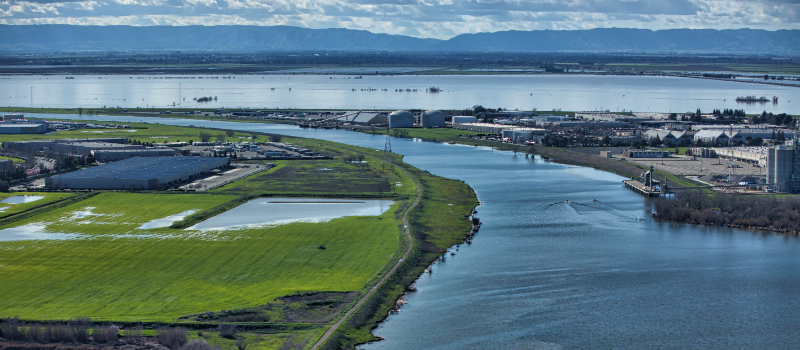
(Photo: USFWS Photo/Steve Martarano)
Abundant and clean water supplies will be essential for California’s people, communities and economy to thrive in the future. Yet, the state faces significant challenges on the road to water security.
To address those difficulties, Governor Gavin Newsom’s administration has released a draft “Water Resilience Portfolio” designed to ensure that California’s water systems, both natural and constructed, will adequately support our growing state in the future. The state seeks further review and comments on the document by February 7 via email comments at input@waterresilience.ca.gov.
The Portfolio consists of more than 100 separate actions designed to improve the state’s ability to contend with limited water supplies, population growth, aging infrastructure, a warmer and more variable climate, and more extreme droughts, floods and wildfires.
As the document explains, no single solution can completely address the state’s water challenges. Rather, achieving water resilience “will be achieved region by region based on the unique challenges and opportunities in each area.”
The Portfolio was developed by the California Natural Resources Agency, the California Environmental Protection Agency and the Department of Food and Agriculture, pursuant to an Executive Order issued by Newsom in April 2019 calling for a portfolio of actions to strengthen and ensure long-term water resilience and ecosystem health. The document was informed by comments from water agencies, business leaders, farming and residential interests, tribes, policy experts and community voices, as well as input from public listening sessions held throughout the state.
The Portfolio notes that the pace of implementing the action items will depend on the extent to which resources are available. It organizes goals and actions into four categories:
- Maintaining and diversifying water supplies with an emphasis on regional strength and flexibility,
- Protecting and enhancing the health of river systems to sustain ecosystems,
- Building connections by improving physical infrastructure for the storage and movement of water, and
- Preparing for new threats, including “flashier floods, deeper droughts, and hotter temperatures.”
The state agencies developed the Portfolio based on several key principles articulated in the Executive Order, including prioritization of multi-benefit approaches that meet several needs at once, elevating use of natural infrastructure such as forests and floodplains, embracing innovation and new technologies, encouraging regional approaches, and strengthening partnerships among stakeholders.
These principles echo the California Economic Summit network’s commitment to creating inclusive sustainable growth through regionally based, multi-benefit solutions that achieve triple bottom line results for people, the environment and the economy.
The Summit’s 2020 Roadmap to Shared Prosperity details priorities and solutions in key policy areas framed as the Building Blocks to the California Dream. Water resilience is a cross-cutting component in many of these policy areas.
“The Administration’s Water Resilience Portfolio underscores the need for regionally based, state-supported innovation and action to ensure a secure water future for California,” said CA Fwd CEO Micah Weinberg. “Whether it is the health of people, development of housing, protection of ecosystems, or prosperity of regions – all depend on safe and abundant water supplies.”
In addition to the Portfolio’s action items and implementation plan, the document also contains several useful appendices. Appendix 3, for example, contains detailed assessments of the water assets and challenges in 10 major hydrologic regions. These assessments offer striking detail about population growth and likely climate change impacts to the regions, including average annual maximum temperature increases, increased frequency of flooding along rivers and coastlines, expansion of fire-prone areas, snowpack disappearance in mountain areas, and median sea level rise calculations.

